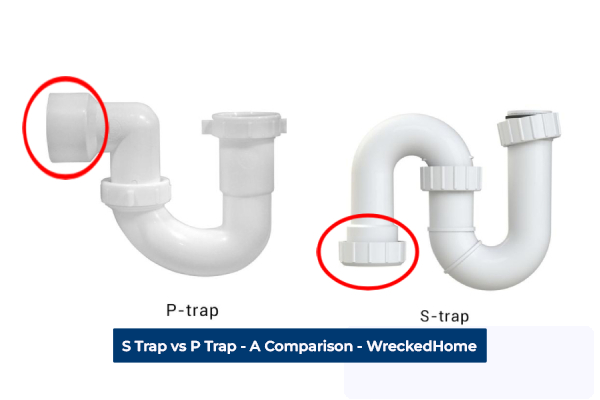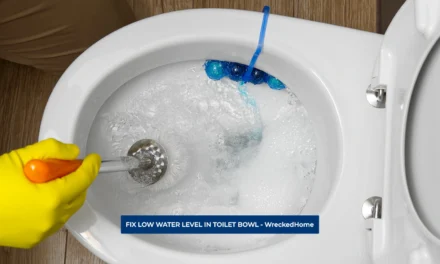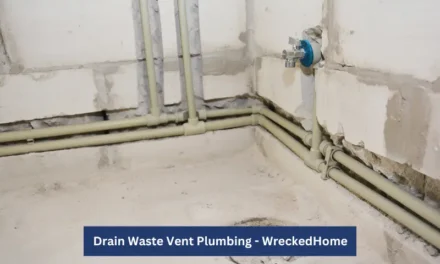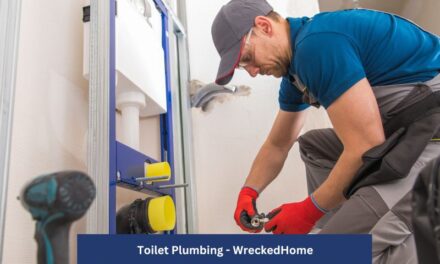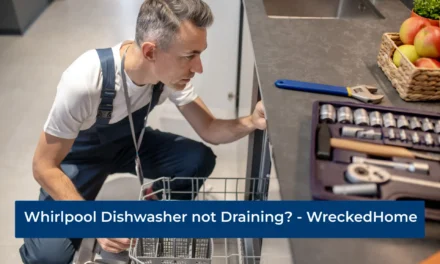S Trap and P Trap are common plumbing traps used in the toilet or sink. These traps are just the plumbing pipes of different shapes that keep harmful sewer gases from making their way back. They create a seal to trap these gases and keep your bathroom, kitchen or laundry space free from the foul smell. Let’s explore S Trap vs P Trap comparison.
If your newly designed house did not get these traps then it is the best to take a deeper look in both these traps. Find out how S traps and P traps are different from each other and see what they have common to share. Everything is discussed over here.
You will also find basics of both traps, their use in plumbing, difference on the basis of shape and advantages. Also, learn about potential issues with these traps and their maintenance requirements. Last but not the least, one of the traps has been banned in some countries so, let’s explore S trap vs P trap before you install it in your home.
Briefly about S Trap
S Trap is a common type of plumbing trap that gets its names from its shape, resembling the letter “S”. You can clearly see the “S” shape when viewing from the side. The fixture retains water in the drain to make a seal. This seal holds back unwanted gases from coming back up in your bathroom. The S trap is compact and convenient. Above all, it can catch your lost items in it.
If your bathroom is of old design you can also check the toilet seat attached to this S trap.
Briefly about P Trap
P trap is a modified version of S trap with better efficiency. The P trap took its names from the pipe shape resembling P and the overall function is the same – to retain a pool of water so harmful gasses cannot come back.
Typically, plumbers made two advancements in the S trap to get the P trap.
First, they added a vent to the piping system. Secondly, a long extension was added that made it like a P.
S Trap vs P Trap Comparison
Plumbing traps play a key role in maintaining a hygienic and safe environment in our homes and buildings. S and P traps share the same basic purpose but differ in many aspects so you need to find all their key features for better understanding.
| Aspects – S trap vs P trap | S trap | P trap |
| Shape | “S” shape | “P” shape |
| Design | Descends vertically, forms an inverse U shape | U-shaped bend with a longer tailpiece and a shorter outlet arm |
| Function | Retains water to prevent back flow of gases | Retains water to prevent back flow of gases |
| Potential issues | Siphoning risks, Ventilation issues | Evaporation issues |
| Advantages | Simple and straightforward design, Suitable for floor-based drainage | Less prone to siphoning issues, Forms a better seal to prevent foul odors and pests |
| Modern building codes | Banned in many countries for new constructions due to siphoning and ventilation issues | Widely used and accepted in modern plumbing systems |
Here is the detailed comparison of the S trap and P trap.
Design and Shape
As said earlier, S and P trap took their names from the shape of respective pipes but their designs slightly vary.
You can see S trap descends vertically from a plumbing fixture like a sink, toilet or bathtub. As it descends, it curves upwards giving an impression of inverse U before curving downward again. This unique shape ensures a certain amount of water remains trapped in it all the time. This standing water acts as a barrier to prevent back flow of the gases into the living spaces.
P trap is a bit different from S trap. There is a U shaped bend in the pipe with two arms of different lengths. The longer arm is usually called as “tail piece” and is connected to the drain of the fixture. On the other hand, the short arm is known as “outlet” and leads to the waste line in the wall or floor.
The function of the P trap is again the same like its opponent – retain water to prevent foul smelling gases.
Visit our store for 10% off our Home Maintenance products here.
Potential Issues with Traps – S trap vs P trap
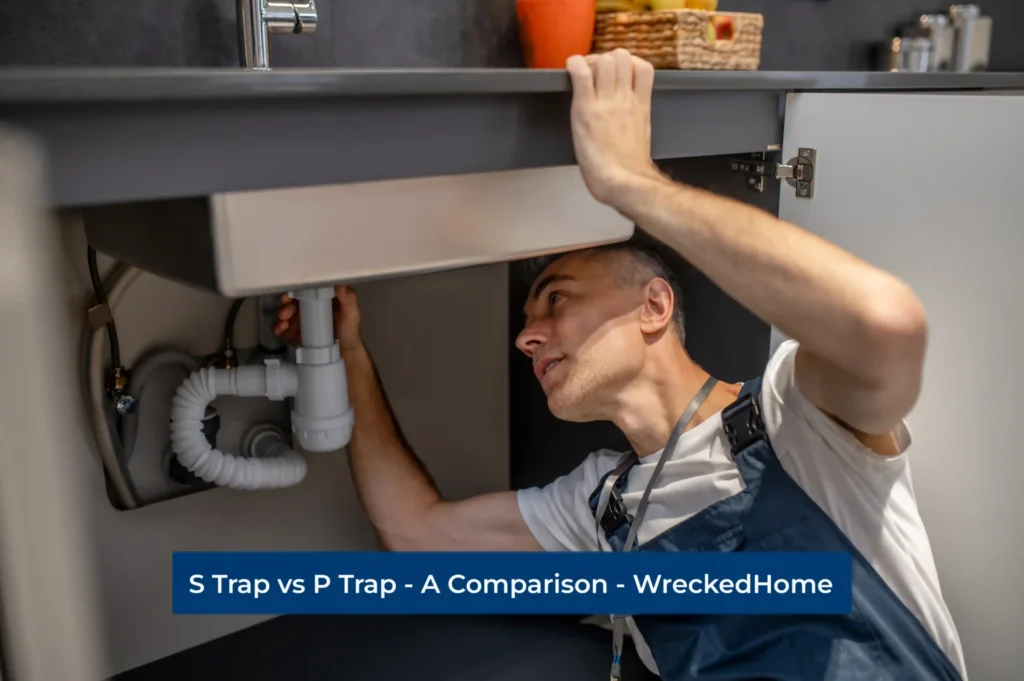
Just like any other thing, these traps can also put you in life-challenging situations. For instance, they lose their purpose of installation and let gases or pests gain entry to your space. If you are installing any of the S or P trap then it is mandatory to know about their potential issues.
You can face two major issues with the S trap:
· Siphoning risks
Siphoning is unintended removal of water from the trap. When a large amount of water flows down the drain rapidly, it creates a pulling effect or you may call it a suction effect. This suction gives a bad impact on the trap in such a way that it empties trap of its water seal. When the seal is gone, your trap loses its functionality and make your space full of a foul smell.
· Ventilation issues
You cannot underestimate power of vents in traps. They ensure proper air flow in the drain system and this balance of air pressure ensures water flows freely without creating a vacuum that can disturb the water seal in the trap. So you can say proper air flow means proper water flow – right!
But the problem arises when S traps are not vented at all or are poorly done. The lack of adequate venting combined with S trap design means there will be more siphoning. Your bathroom or kitchen will be at more risk of harmful gases.
If your drain system has a P trap then it does not mean you are free of challenges.
One of the most common issues you can face with a P trap is evaporation. All water dries up and the trap loses seal. When there is no seal the sewer gases and pests find the best chance to come back. You can face this issue in bathrooms or sinks that are not commonly used.
Advantages
Plumbing traps are the most important fixtures in houses and you cannot just randomly use any. There are many advantages of S traps and P traps so it will be best to consider this first.
For instance, the simple and straightforward design gives the S trap a plus point. You don’t need to hire plumbers for the installation of these traps and you can do it yourself in no time. Similarly, S traps give an advantage of floor based drainage. You can easily install these traps where wall drainage is not possible and you only have to use floor drain lines.
P traps have their own benefits like you get to face less siphoning issues. They make a better seal in the drainage and discourage foul smells and pests to enter your home. Similarly, P traps are way better to handle air pressure and help in easy water flow.
P traps have also made their space in modern architecture despite the fact that they were introduced after S traps. Their ease of use, handling and more benefits give them this space and homeowners prefer P trap in their drainage system.
Modern Building Codes
In light of potential health and hygiene hazard, higher authorities have banned use of the S trap in modern constructions. Their siphoning effect can put lives of inhabitants at risk of ventilation issues. So, installing S traps in new constructions is banned now in many countries like U.S. Though you can find them in the market and are not illegal to buy but installing one means you are breaking the plumbing code. And, if you are caught you will either need to replace it with an allowed trap or convert it into P trap.
So, it is best to take a safer route and do not try to break the code. It is just for your well-being so stay away from re-installation issues.
S Trap vs P Trap – What’s the Best?
After getting all the details of S trap vs P trap, you need to learn which one is the better option. So, remember, the days of S traps are gone. Now is the age of modern plumbing that allows P trap, not the S trap. These traps are easy to install and have vents for air flow. Similarly, you face less issues with gas hazards especially in vacation homes. These places do not have 24 hours ventilation and can put your life at risk. So, it is best to use P traps and get rid of all the problems.
Can you convert an old S trap to a P trap?
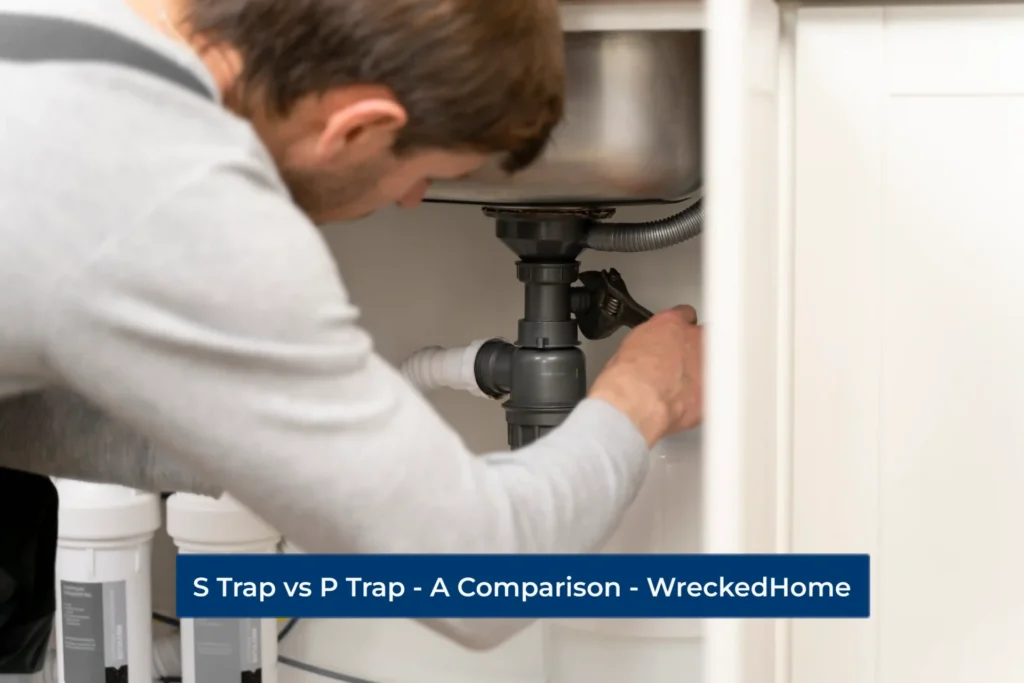
If your house’s drainage system has S traps and you do not want to invest more on replacement then wiser option is to convert these old traps to P traps. This conversion is easy and do not take your extra money. All you need to do is attach at least 4 inches pipe to the S trap and add a vent to it. You don’t need to redesign complete pipe network to make this trap functional. It will go smooth as it is.
Conclusion – S Trap vs P Trap
Plumbing traps play a significant role in homes and buildings. These are not just drainage fixtures. In fact they are the key to a healthy, and hygienic life. S and P traps are the most commonly used traps having their up and down sides. You need to do proper research before installing any trap in your bathroom or kitchen that suits your requirements and keep your space germ-free.
For any repairs, installations, builds, or questions; We recommend you to hire a professional. Find A Pro Near You Here!

